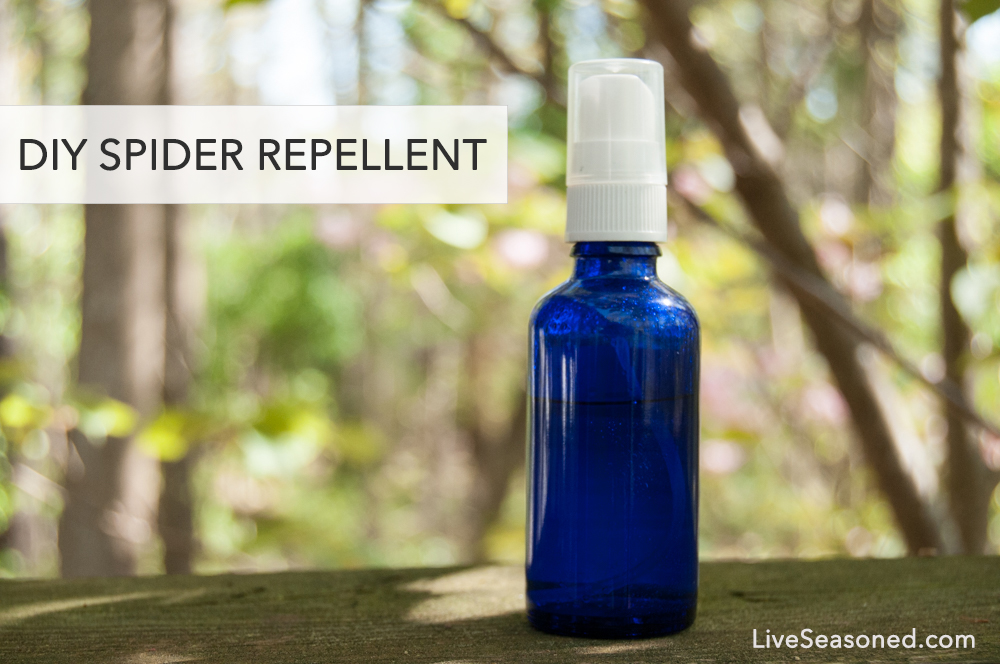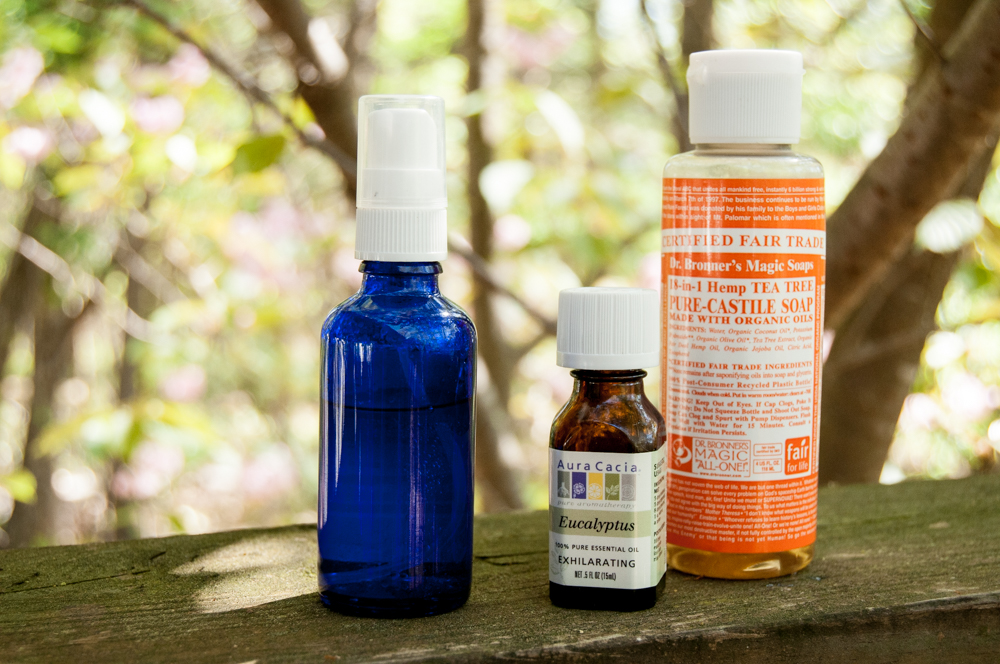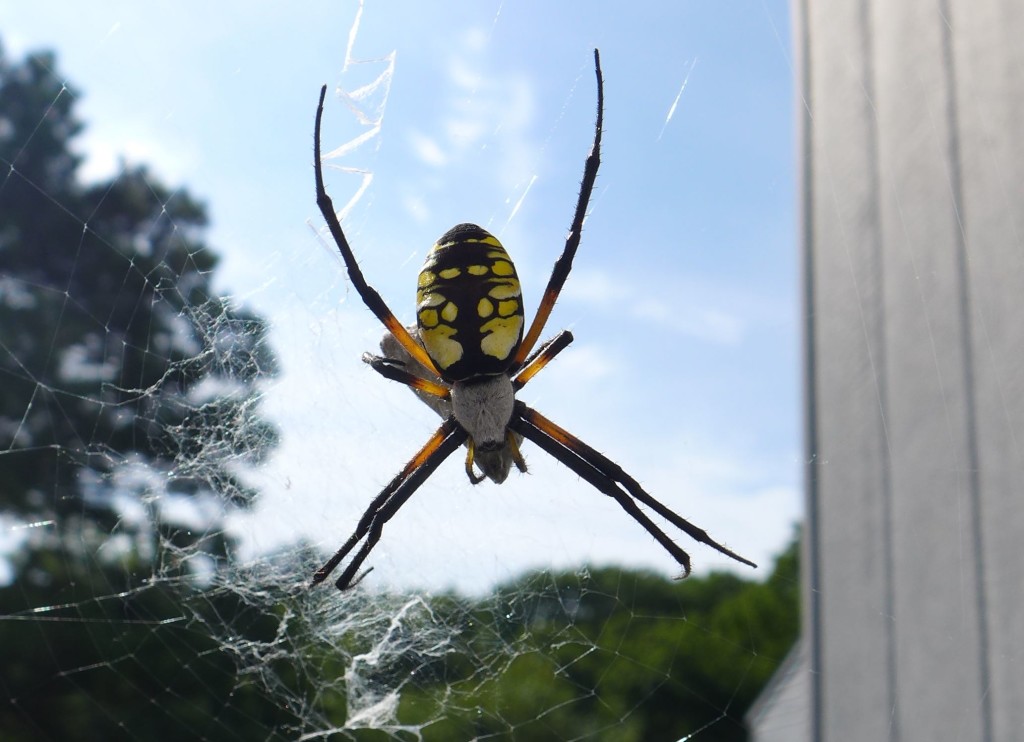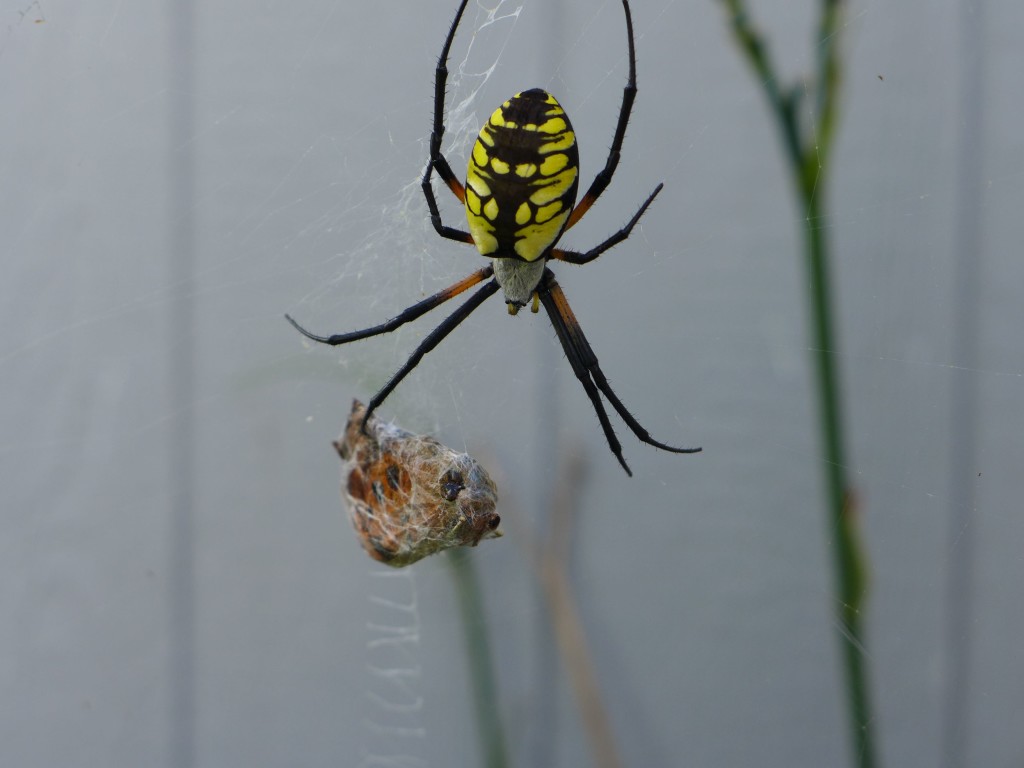Oh spiders. I love them, but I’m also terrified of them. I definitely keep a handful of them in my house to get rid of little flying pests, but big furry spiders? GET OUT! This past week, we had to catch and release a spider every.single.night. They’re big, brown, and hairy and I’m sick of seizing up in fear every time I see one, so I made this natural DIY spider repellent. Full disclosure, today is the first day I’m using it so I will definitely report back to let you know how effective it is. 
Apparently spiders are discouraged by strong scents like garlic, lemon, peppermint, citronella, and eucalyptus. According to my research, spiders also detest the taste of tea tree oil. While there are plenty of combinations you can mix up to deter spiders, here’s how I went about it:
Add 3 Tablespoons of Dr. Bronner’s Tea Tree Oil Soap & 5 drops of Eucalyptus Oil to a spray bottle and spritz it around all the windows and doors and other area where spiders may enter your house. Don’t spray it directly on spiders, I mean you could, but that’s just cruel.
You could also spray this solution inside, but I’d test an inconspicuous area first to make sure it doesn’t leave soap or oil stains your paint. It didn’t leave stains on my walls, but not all interior paints are created equally 
I chose to try this DIY natural spider repellent instead of using toxic chemicals (they’re harmful to kids, pets, plants, insects, animals, our waterways and the earth in general) because they’re just plain overkill. I think very few instances call for harsh chemicals to be used. Often times you can find a natural repellent to tackle your pest problem. Along with the DIY spider repellent, these are a few other tricks to discourage arachnids from entering the apartment.
- Thoroughly clean around doors and windows inside and outside the house.
- Clean up any clutter in the corners of the cupboards and house in general.
- Turn off porch lights so as not to attract flying insects aka a spider’s dinner.
- Move stacks of wood and other debris far away from your home’s foundation.
- Seal cracks in the home’s foundation and under doors and around windows.
- Dust often! Spreading signs of activity and life to normally sleepy corners of your house will prevent spiders from parking there.
Happy spider-free homes to y’all!




